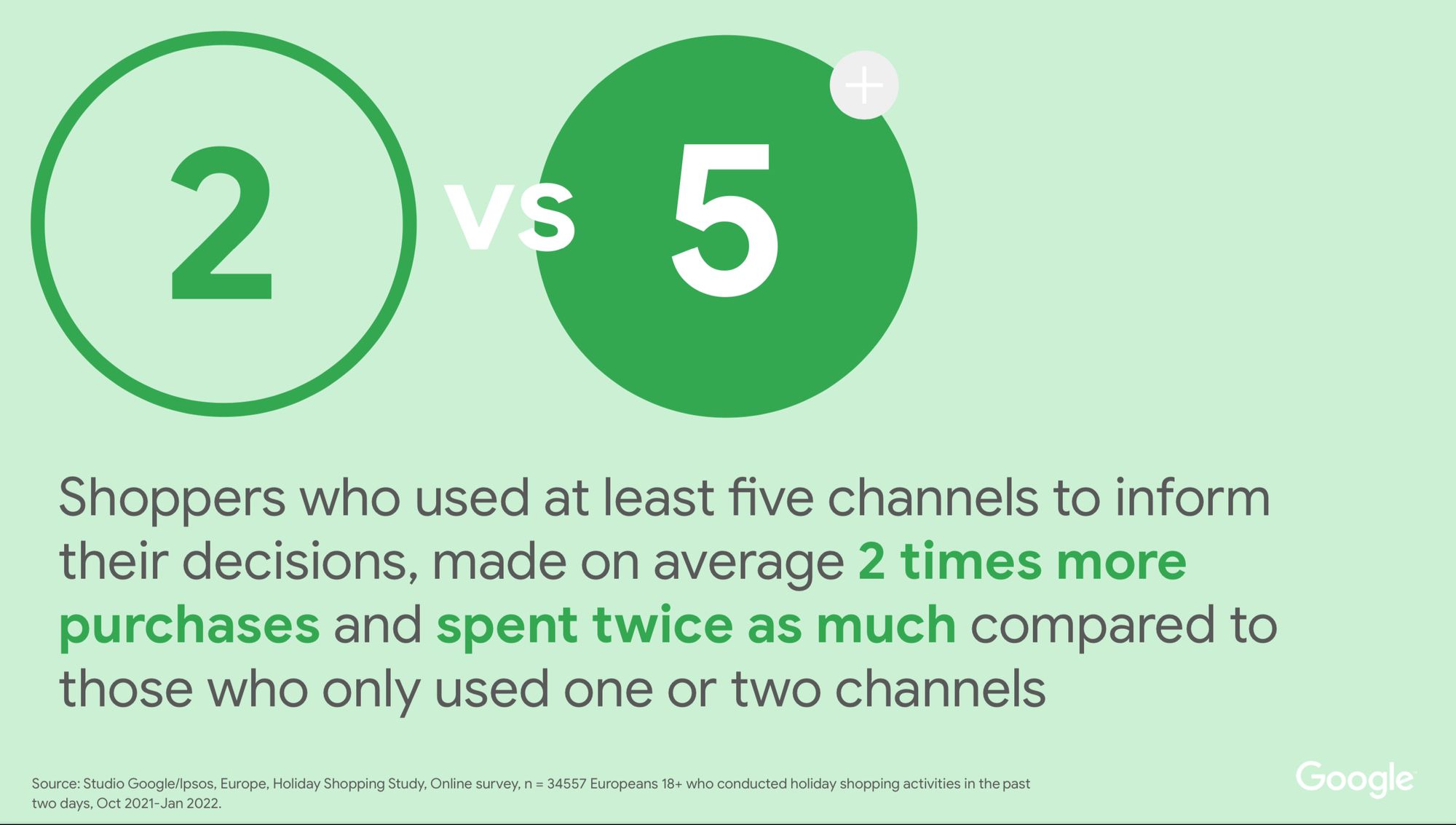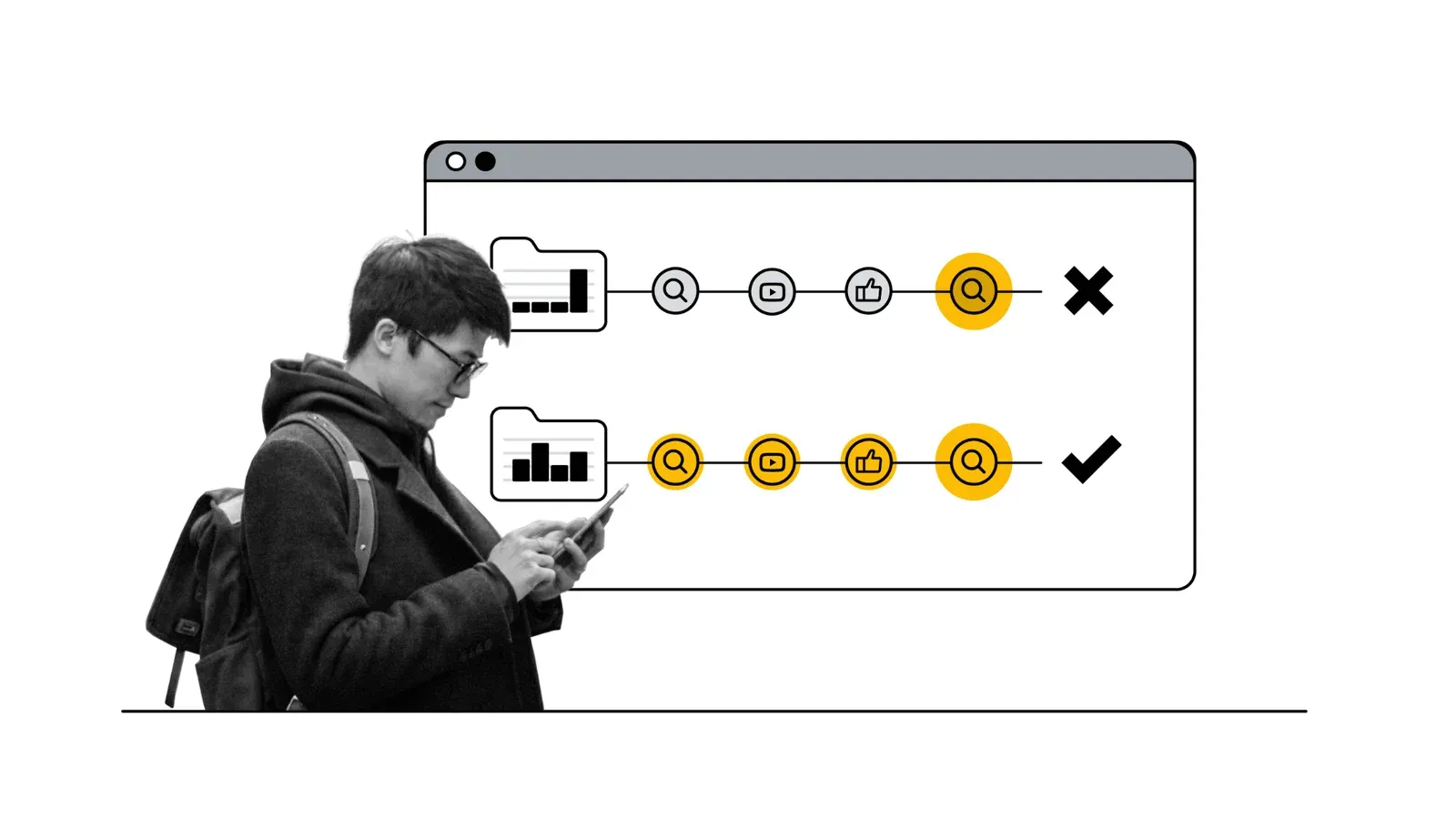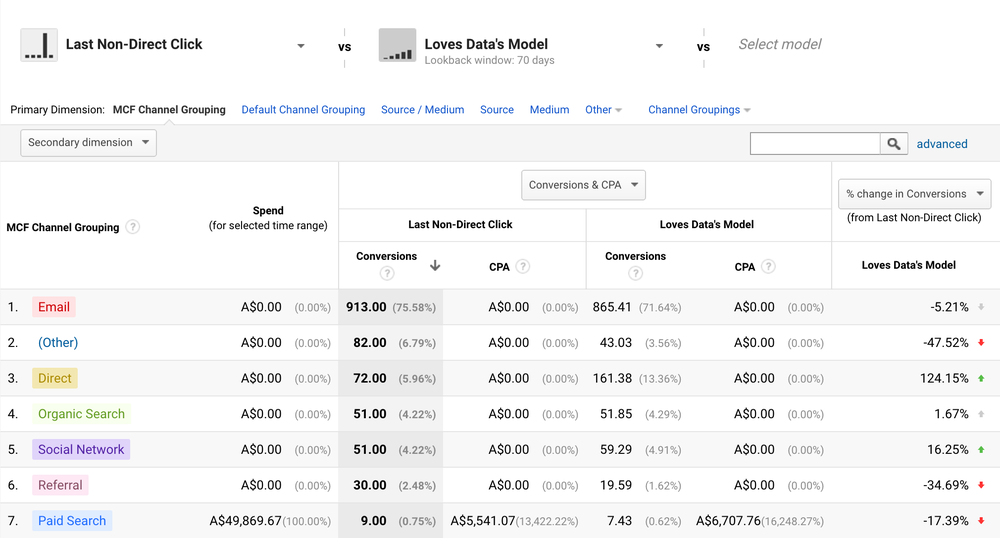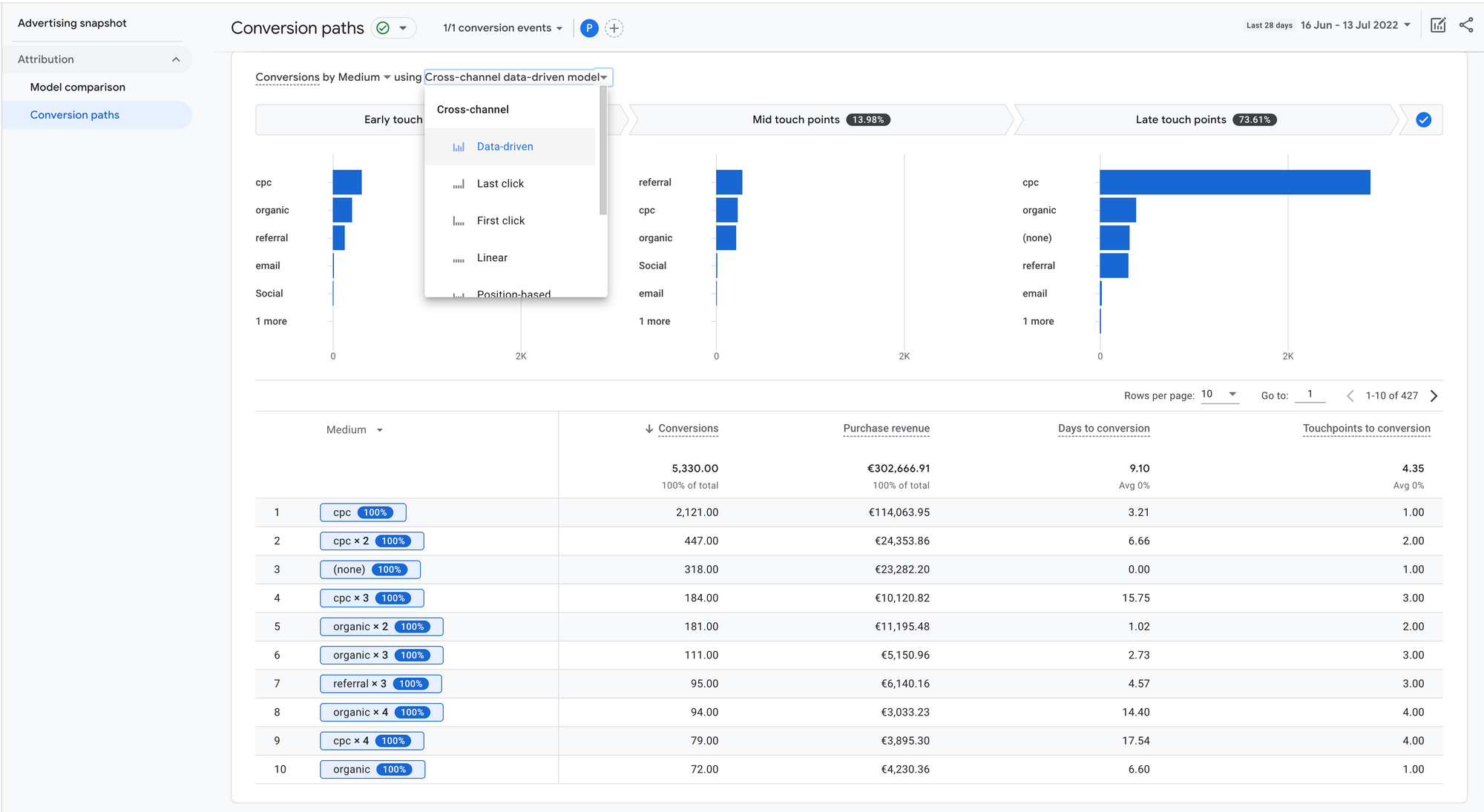
It's commonly used as a comprehensive strategy to acquire as many customers and sales as possible, trying to discover the right insights in the advertising platforms. However, the contribution evaluation of sales is shown by multiple partners that have an interest to show you the best performance they can with their machine learning algorithms - every platform have their business interests.
A correct analysis of sales contributions is important for allocation of budget on that platforms and plan a proper marketing strategy for pointing to the best results.
The famous Messy Middle: to understand well what is in between the acquisition (first touchpoint) and the final sale, have become a fundamental reading for all online businesses.
The central touchpoint contributes substantial weight to customer sales. I recommend this Google article for a better understanding of the point.

It seems a bit weird approach, but some agencies are currently calculating marketing campaign performance with a unified ROAS dictated by the simple calculation of all the channels taken in place:
ROAS = Total Revenue / Total Ad Spend
Underlying this calculation is an objective assumption that working in a multi-touch and multi-channel scenario, we should consider the ROAS at a higher "view."

Based on Ipsos research, the merchants that in 2021 used five channels to communicate with their audience have had x2 more sales than others.

It is a very interesting fact: omnichannel is a must-have. The only difference is how you manage communication on the different channels and what strategy you roll out.
Another point of view is calculating the contribution with a scientific method.
Working in a multi-touch and multi-channel environment, it's better to understand who is contributing and who is contributing much more than others to be more impactful on the business sales.
What is a marketing attribution model?
A small step behind introducing the concept of marketing attribution
How he attributes himself to a partner and his weight in fulfilling this goal. Attribution models then assign different values to the various touchpoints that drive sales.
The most widespread attribution methods currently and still present in GA3 are:
- Last Interaction Attribution. ...
- First Interaction Attribution. ...
- Last Non-Direct Click. ...
- Linear Attribution. ...
- Time Decay Attribution. ...
- Position-based Attribution
Once you have switched to GA4, you can use an attribution method based on the data and compare it with the "standard" ones in the list above.
The configuration of Google Analytics 4 is not a walk for those unfamiliar with analytical tools or data setup, but it offers excellent satisfaction if configured well.
Why is marketing attribution necessary?
To better evaluate the allocation of budgets and costs for each sale, customer acquisition, or, more generally, objectives.
For example, suppose a consumer is exposed to a display ad and email campaign but only converts after seeing a special promotion in the email. In that case, marketers may notice that this sideline has played a more role. Important in driving sales versus display ads. They can then devote more resources to building targeted email campaigns.
Google Ads has a different attribution method than Facebook Ads as well as Pinterest, TikTok and programmatic partners.
To achieve the data granularity required for effective attribution, marketing teams need advanced analytics platforms that can accurately and efficiently distil big data into person-level insights that can be used for optimizations within the campaign.

How is marketing attribution measured?
Marketing attribution can be measured through models that evaluate different aspects of the campaign to determine which ads were most effective for sale. The most effective attribution models will provide information on:
- Which messages a consumer was exposed to and on which channel
- Which point of contact had the most significant impact on their purchase decision
- The role of brand perception in the conversion decision
- Which advertisement has better results
- Which format is more performing
- The effect of external factors (e.g., how gas prices affect auto sales)
Many businesses still rely on the last-click attribution model, even though it can no longer reflect the buying behaviour of real consumers.
How to normalize the attribution of conversion campaigns
Configuring Google Analytics 4 correctly, it's possible to use data-based attribution (machine learning) to show which campaigns had an impact better on which touchpoint - see exactly what campaigns have influenced the conversion in the user's journey.
The template has been available in Google Ads since 2014 but is now incorporated into the new Google Analytics 4 platform. The template works on devices like smartphones and tablets and channels like Search, social, apps, Display, and YouTube.
The dedicated section of the tool allows us to evaluate campaigns with different attribution methods by comparing the one based on data (data-driven) and with other more recognized and standard models such as last click, first click, etc.

The comparison allows you to view, using the last column, the differences between the different models. In this first view, selecting a suitable time range makes it possible to evaluate the purchase conversions by a single medium.

In the image above, the section dedicated to the conversion path is shown, divided into three macro touchpoints of the funnel (early, mid, and late). In these columns, it is possible to highlight the actual contribution to the customer sales decision-making path.
Changing the breakdown from Source to Campaign is interesting because it shows what happens at the different steps of the purchase funnel.

E-commerce companies that consistently conduct marketing experiments instead of taking a “one and done” approach produce 30% higher ad performance in the same year and a 45% increase in performance the year after that.”
– Think With Google
Schedule a meeting to start a growth marketing strategy, based on your customer and business insights, in a few weeks.
